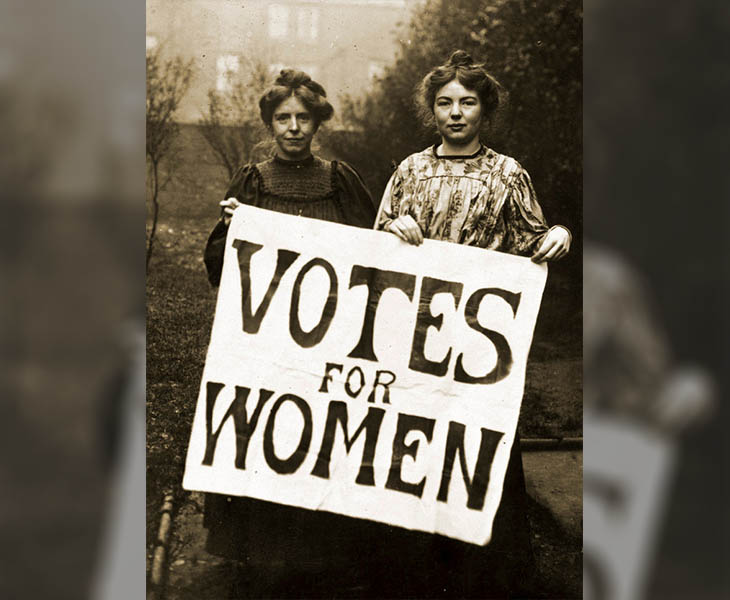History of International Women's Day
International Women's Day (IWD) has been observed since the early 1900's - a time of great expansion and turbulence in the industrialized world that saw booming population growth and the rise of radical ideologies.
1908
Great unrest and critical debate was occurring among women. Women's oppression and inequality were spurring women to become more vocal and active in campaigning for change. Then in 1908, 15,000 women marched through New York City demanding shorter hours, better pay and voting rights.

1909
In accordance with a declaration by the Socialist Party of America, the first National Woman's Day (NWD) was observed across the United States on February 28. Women continued to celebrate NWD on the last Sunday of February until 1913.
1910
In 1910 a second International Conference of Working Women was held in Copenhagen. A woman named (Leader of the 'Women's Office' for the Social Democratic Party in Germany) tabled the idea of an International Women's Day. She proposed that every year in every country there should be a celebration on the same day - a Women's Day - to press for their demands. The conference of over 100 women from 17 countries, representing unions, socialist parties, working women's clubs - and including the first three women elected to the Finnish parliament - greeted Zetkin's suggestion with unanimous approval and thus International Women's Day was the result.
1911
Following the decision agreed at Copenhagen in Denmark in 1911, International Women's Day was honored for the first time in Austria, Denmark, Germany and Switzerland on 19 March. More than one million women and men attended IWD rallies campaigning for women's rights to work, vote, be trained, to hold public office and end discrimination. However less than a week later on March 25, the tragic 'Triangle Fire' in New York City took the lives of more than 140 working women, most of them Italian and Jewish immigrants. This disastrous event drew significant attention to working conditions and labor legislation in the United States that became a focus of subsequent International Women's Day events. 1911 also saw women's Bread and Roses campaign.
1913-1914
On the eve of World War I campaigning for peace, Russian women observed their first International Women's Day on February 23, the last Sunday in February. Following discussions, International Women's Day was agreed to be marked annually on March 8 that translated in the widely adopted Gregorian calendar from February 23 - and this day has remained the global date for International Women's Day ever since. In 1914, further women across Europe held rallies to campaign against the war and to express women's solidarity. For example, in London in the United Kingdom there was a march from Bow to Trafalgar Square in support of women's suffrage on March 8, 1914. Sylvia Pankhurst was arrested in front of Charing Cross station on her way to speak in Trafalgar Square.
1917
On the last Sunday of February, Russian women began a strike for "Bread and Peace" in response to the death of over 2 million Russian soldiers in World War 1. Opposed by political leaders, the women continued to strike until four days later the Czar was forced to abdicate and the provisional Government granted women the right to vote. The date the women's strike commenced was Sunday February 23 on the Julian calendar then in use in Russia. This day on the Gregorian calendar in use elsewhere was March 8.
1975
International Women's Day was marked for a first time by the United Nations in 1975. Then in December 1977, the General Assembly adopted a resolution proclaiming a United Nations Day for Women’s Rights and International Peace to be observed on any day of the year by Member States, in accordance with their historical and national traditions.
1996
The UN announced their first annual theme "Celebrating the past, Planning for the Future" which was followed in 1997 with "Women at the Peace table", in 1998 with "Women and Human Rights", in 1999 with "World Free of Violence Against Women", and so on each year.
2000
By the new millennium, there was little mainstream activity occurring for International Women's Day in most countries. The world had moved on and, in many spheres, feminism wasn't a popular topic. Something was needed to re-ignite International Women's Day giving it the respect it deserves and to raise awareness among the masses. There was urgent work to do - battles had not been won, and gender parity had still not been achieved. There was a strong need to engage the mainstream masses, and to encourage and support collective action.
Comments
Post a Comment